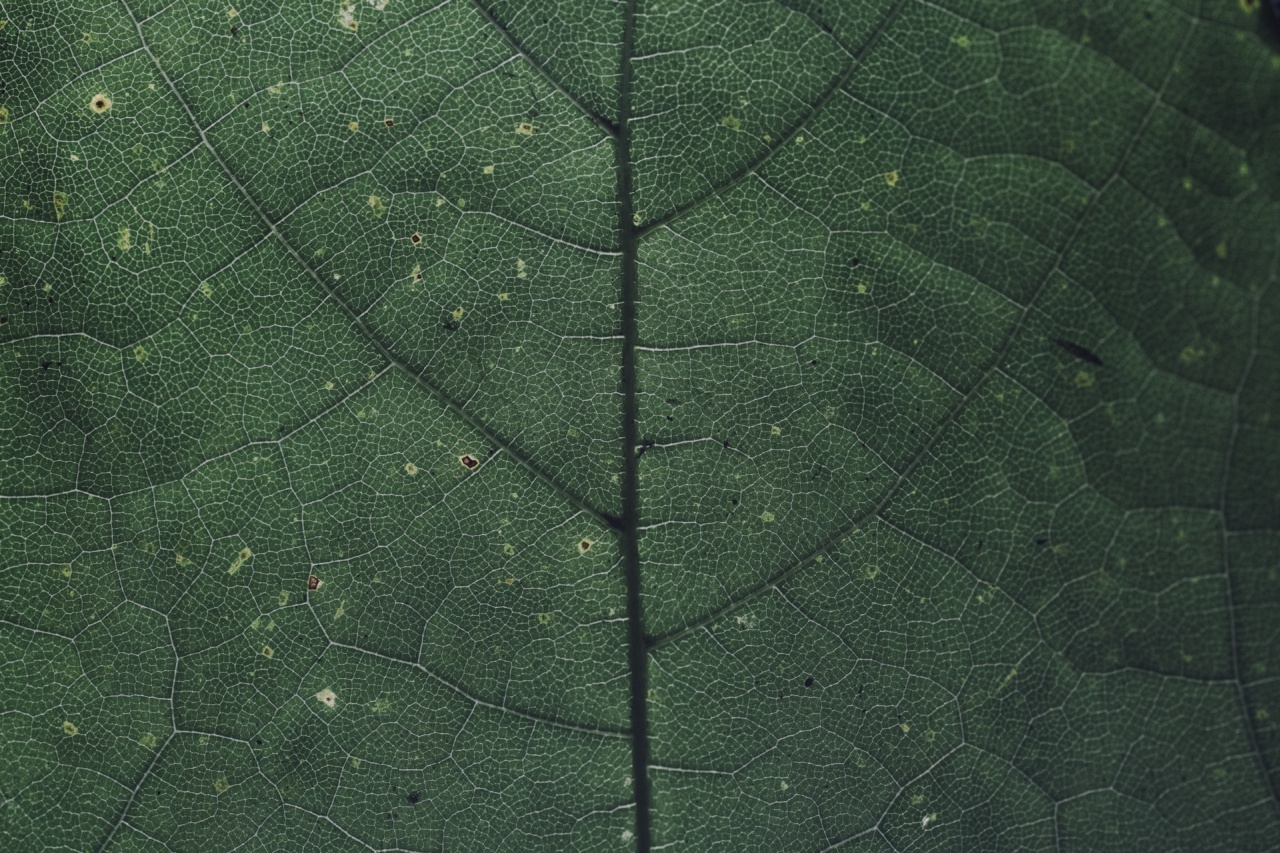Varicose veins are a common condition that affects both men and women. These enlarged, twisted veins usually occur in the legs, but they can also develop in other parts of the body, including the scrotum.
In this article, we will delve into scrotal varicose veins, their causes, symptoms, risk factors, complications, and available treatment options.
What are Scrotal Varicose Veins?
Scrotal varicose veins, also known as varicoceles, are abnormal dilations of the veins within the scrotum. They occur when the valves in the veins of the scrotum become weak or damaged, causing blood to pool and the veins to enlarge.
Causes of Scrotal Varicose Veins
There is no definitive cause for scrotal varicose veins, but several factors may contribute to their development:.
1. Venous Insufficiency
One of the most common causes of scrotal varicose veins is venous insufficiency. This condition occurs when the valves in the veins of the scrotum fail to function properly, leading to blood reflux and vein dilation.
2. Genetic Predisposition
Some individuals may have an inherited weakness in the valves of their veins, making them more susceptible to varicose veins, including scrotal varicose veins.
3. Hormonal Imbalances
Hormonal imbalances, particularly during puberty, may also contribute to the development of scrotal varicose veins. Increased levels of certain hormones can weaken the vein walls and valves.
4. Increased Pressure in the Abdomen
Conditions that cause increased pressure in the abdomen, such as obesity or straining during bowel movements, can lead to the formation of scrotal varicose veins.
Symptoms of Scrotal Varicose Veins
Scrotal varicose veins may not always cause noticeable symptoms. However, when symptoms do arise, they may include:.
1. Visible Veins
Enlarged and twisted veins can be seen underneath the skin of the scrotum. They may resemble a bag of worms.
2. Pain or Discomfort
Some individuals may experience a dull ache, heaviness, or discomfort in the scrotum. Pain may worsen after standing or physical exertion.
3. Testicular Atrophy
In severe cases, scrotal varicose veins could potentially lead to testicular atrophy, which is a decrease in the size of the testicles.
Risk Factors for Scrotal Varicose Veins
While the exact cause of scrotal varicose veins remains uncertain, certain factors may increase the risk of developing this condition:.
1. Age
Scrotal varicose veins are more common in older males, as the veins lose their elasticity and valves may become weakened over time.
2. Family History
If someone in your family has been diagnosed with scrotal varicose veins, your risk of developing them may be increased.
3. Lifestyle Factors
Being overweight, leading a sedentary lifestyle, or regularly engaging in activities that increase abdominal pressure can contribute to the development of scrotal varicose veins.
Complications of Scrotal Varicose Veins
While scrotal varicose veins are generally harmless, they can sometimes lead to complications such as:.
1. Fertility Issues
Varicoceles may interfere with sperm production or function, potentially leading to infertility.
2. Testicular Pain
In some cases, scrotal varicose veins can cause chronic testicular pain or discomfort.
3. Testicular Atrophy
If left untreated, severe varicoceles can result in testicular atrophy, which may reduce testosterone production and fertility.
Treatment Options
Several treatment options are available for scrotal varicose veins, depending on the severity of the condition and the presence of symptoms:.
1. Observation
If the varicoceles are small and asymptomatic, your healthcare provider may recommend a “wait and watch” approach without any active treatment. Regular check-ups and monitoring may be advised in such cases.
2. Supportive Measures
For individuals experiencing discomfort or pain, wearing supportive undergarments or using scrotal support devices can provide relief and improve symptoms.
3. Surgery
In cases where symptoms are severe or fertility is affected, surgery may be recommended. The two main surgical options are:.
a) Varicocelectomy
This procedure involves ligating or removing the dilated veins. It can be performed through open surgery or minimally invasive techniques such as laparoscopy or embolization.
b) Microsurgical Varicocelectomy
A delicate and precise surgical technique that uses a high-powered operating microscope to identify and ligate the affected veins. This approach offers excellent success rates and low complication rates.
Preventing Scrotal Varicose Veins
While it may not be possible to prevent the development of scrotal varicose veins completely, there are several measures you can take to reduce the risk and minimize symptoms:.
1. Maintain a Healthy Weight
Being overweight or obese puts increased pressure on the veins, which can lead to their dilation. Maintaining a healthy weight can reduce this risk.
2. Exercise Regularly
Engaging in regular physical activity, including cardiovascular exercises and strength training, can improve blood flow and promote overall vascular health.
3. Avoid Prolonged Sitting or Standing
If your work or lifestyle involves prolonged sitting or standing, take regular breaks and incorporate movements that encourage blood circulation.
4. Wear Supportive Undergarments
Choosing underwear that provides adequate support can help reduce discomfort and pressure on the veins of the scrotum.
Conclusion
Scrotal varicose veins, or varicoceles, are enlarged and twisted veins within the scrotum. While they may not always cause symptoms or complications, they can lead to discomfort, pain, and even fertility issues in some individuals.
It is essential to understand the causes, symptoms, and available treatment options for scrotal varicose veins. If you suspect you have scrotal varicose veins or are experiencing any related symptoms, consult with a healthcare professional for an accurate diagnosis and appropriate management.





























